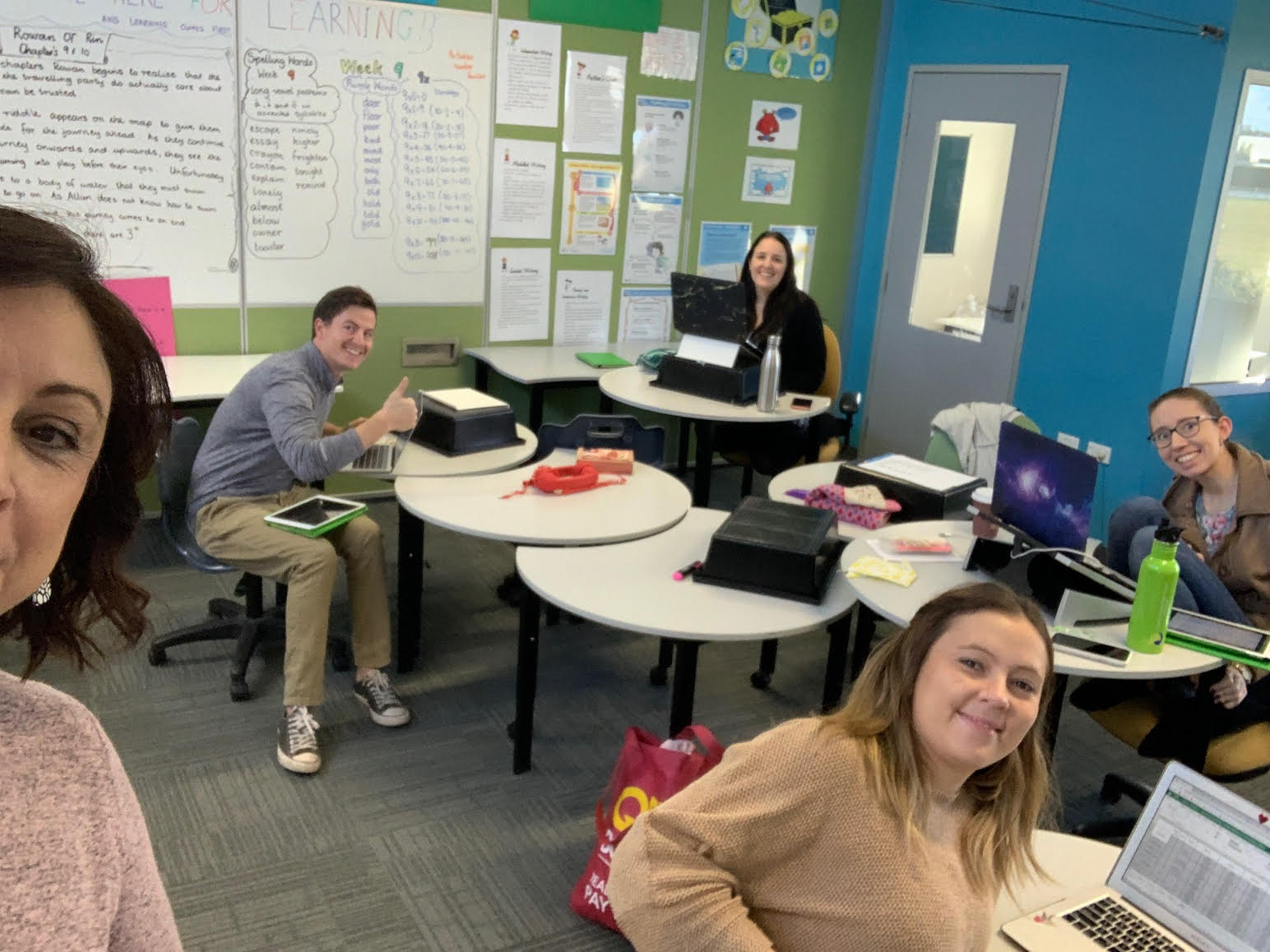Australia is often referred to as ‘The Lucky Country’, usually in a favourable way, and in relation to the Coronavirus pandemic, it has proven to be true. (As a side note, the origin of the phrase was negative and it was actually used in an ironic way, but it has become a generally positive part of our lexicon.) The number of Coronavirus cases began to rise in early March, and reached a peak of 460 confirmed cases in a single day at the end of the month. In response to this, and what we were witnessing happen around the world, the Federal and State Governments began to put social distancing restrictions in place. In Queensland, the state I live in, parents were encouraged to keep their children home if possible, and then schools were closed to students a week early at the end of Term 1, however staff were still required to attend school to plan and prepare for the shift to learning from home.
When school resumed across Australia in early April all staff went into work, but only students whose parents were required to attend their workplace came into school. During these five weeks, all students in one grade were supervised in one classroom by teachers on a rotating roster, while all other teachers communicated with students who were learning at home, as well as continuing to plan for remote teaching and learning. All of which occurred within strict social distancing requirements.

As the imminent return of all students to the classroom approached, there were many questions and concerns about the health and safety of all stakeholders, and as you can imagine emotions were running high. Since early March there have been many mixed messages and contradictions about what was and wasn’t safe, which fueled anxiety and anger. However, what we knew for certain, was that students were returning to the classroom, so we focused on how to joyfully welcome them back, re-establish relationships, introduce new health and safety routines, and return to our core business of teaching and learning.
The transition back to the classroom took place in mid-May, and the first semester of school has recently come to an end. There were many adjustments required, with some, such as more stringent hand-washing routines and keeping children who were sick home from school, having positive outcomes. As students were no longer required to socially distance in classrooms, having all students back in the classroom was easier to manage, however strict social distancing requirements for adults still remained, therefore no parents were allowed on school grounds and staff had to ensure they maintained a safe distance, which has been challenging at times, given the size of shared working spaces and our natural inclination to be physically close when socialising.

As we have transitioned back to the classroom, we have reflected on the lessons we learnt from remote learning, and identified some ‘silver linings’. I framed our reflections around the three ideas below:
START – something new we tried.
REPEAT – something from remote learning that we’re continuing.
DELETE – something we stopped doing.
Start: We heard more from some students than we had pre-COVID. They engaged more in sharing and conversation, as well as asking questions, via online platforms than they had face-to-face at school. In order to continue to incorporate a variety of modes and opportunities for student voice, we began a ‘Confidence Check-In’ during lessons via Seesaw. This enables students to share if they need help, without having to ask in front of the class, which may have been a barrier previously.
Repeat: We continued using our Daily Well-being Check-In. Even though we greet students at the door and can gain insight into their mood upon arriving at school, the check in has provided a way to monitor their readiness for learning. It encourages students to be more mindful, aware and reflective of how they are going. I am also able to follow up with students who may have shared about an issue or incident before school, such as not getting enough sleep or not having had breakfast, and use this information to guide me when engaging with the student.
Delete: We no longer need to make daily videos explaining the tasks for the day, however we did continue creating short, instructional clips to embed in lessons. This enables students to revisit concepts as needed when completing tasks, and also allows more independence and responsibility for learning.
Restrictions continue to ease in Australia, and we slowly move towards the return of ‘life as we knew it’. There are some changes that will be permanent, and some that we can’t wait to see end, but let’s not rush to return to ‘normal’. Despite the hardship and the heartache, we have been given an opportunity to slow down, examine our practises, and identify where we can make changes to add value to what we do. Let’s never lose our capacity to reflect and grow who we are and what we do as educators.
Educators, how are you adjusting to this new reality?
Feel free to share how you are adjusting and helping to support students and teachers from afar in our comments section.






